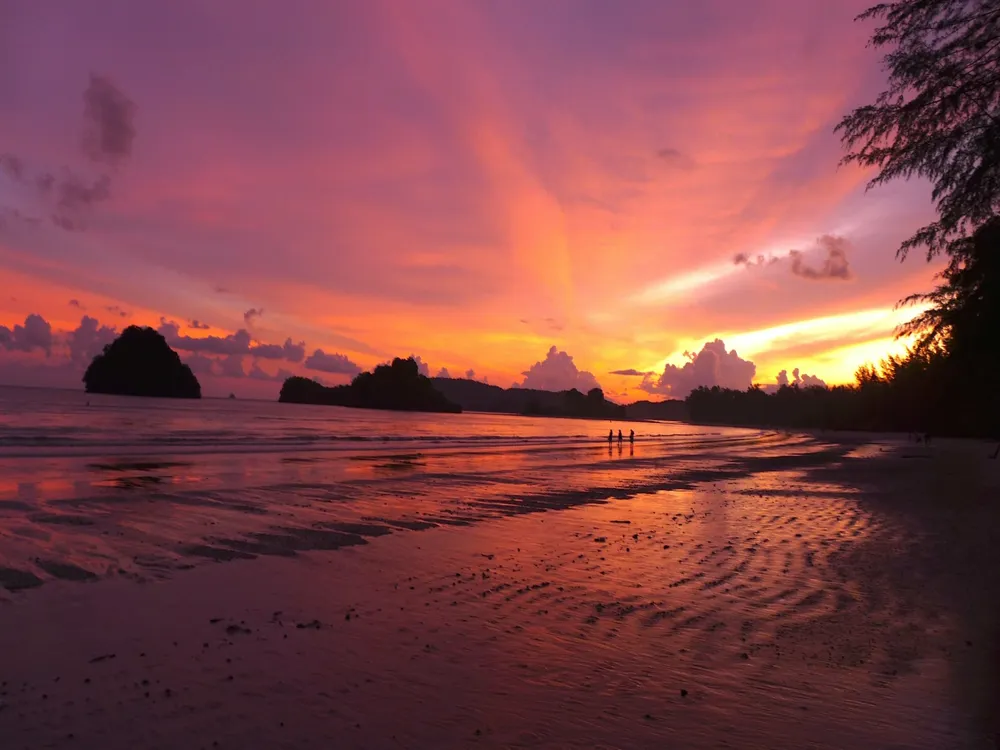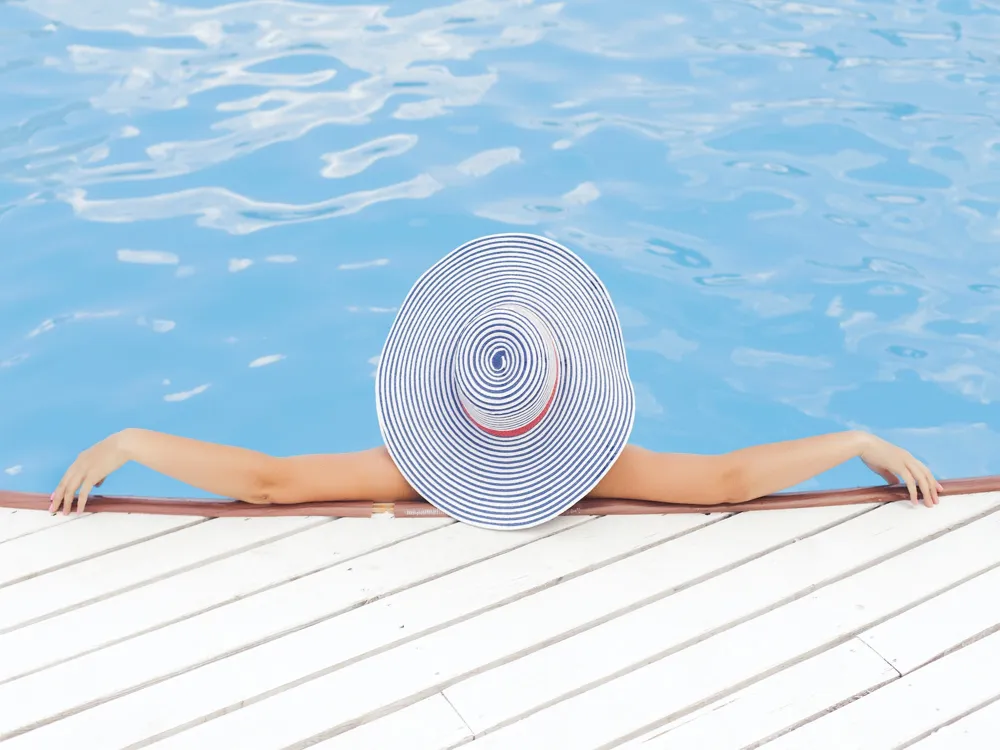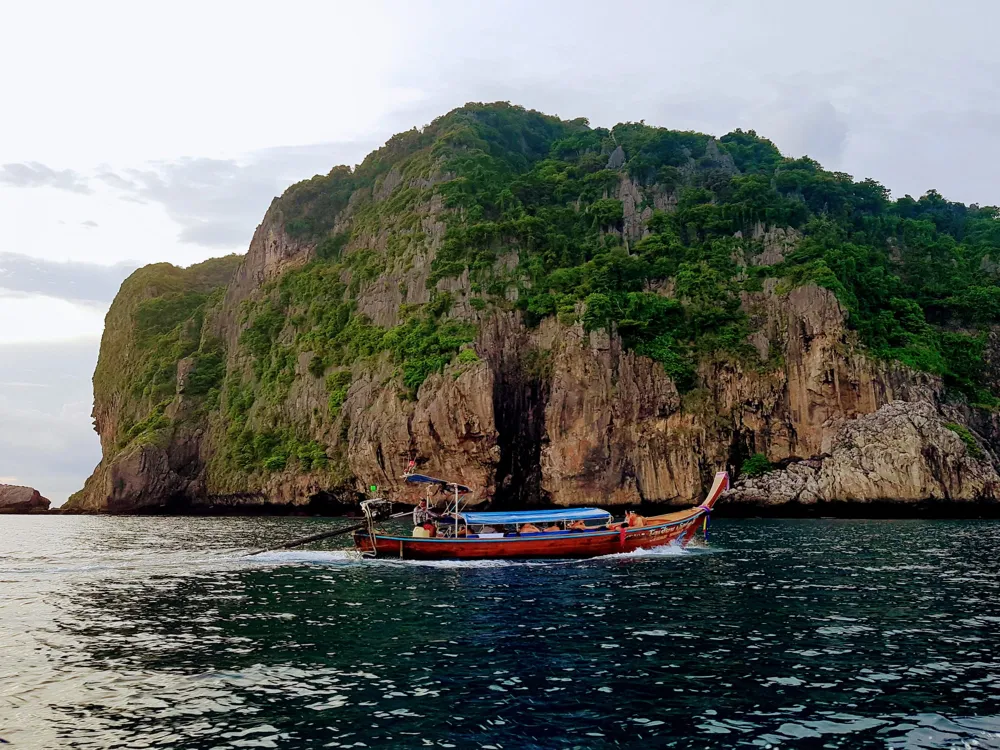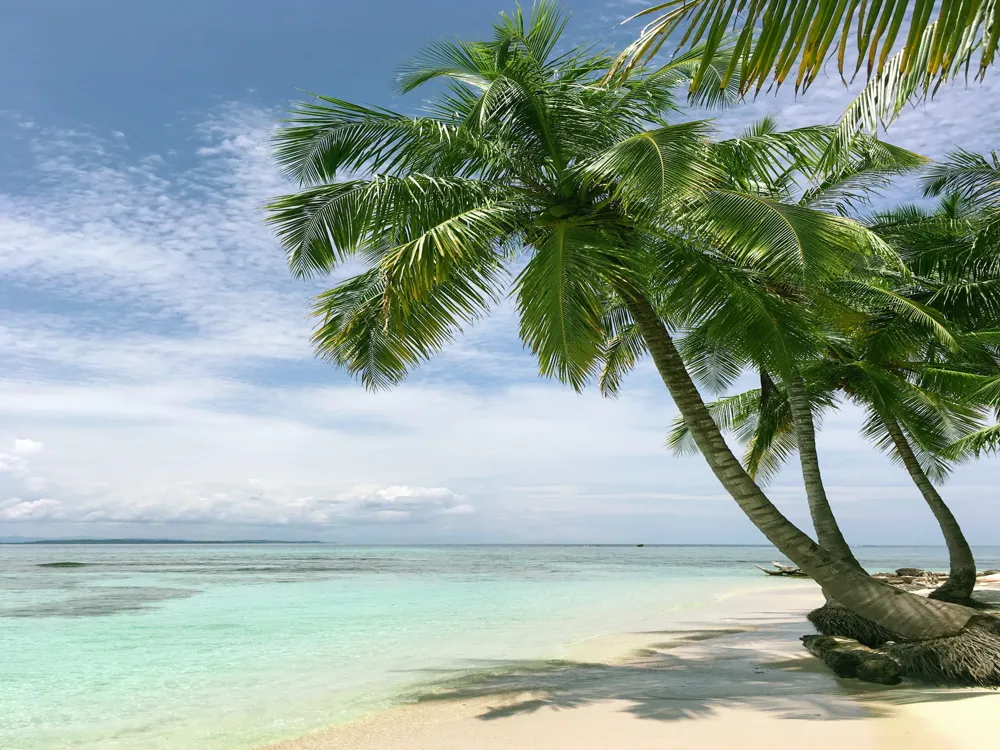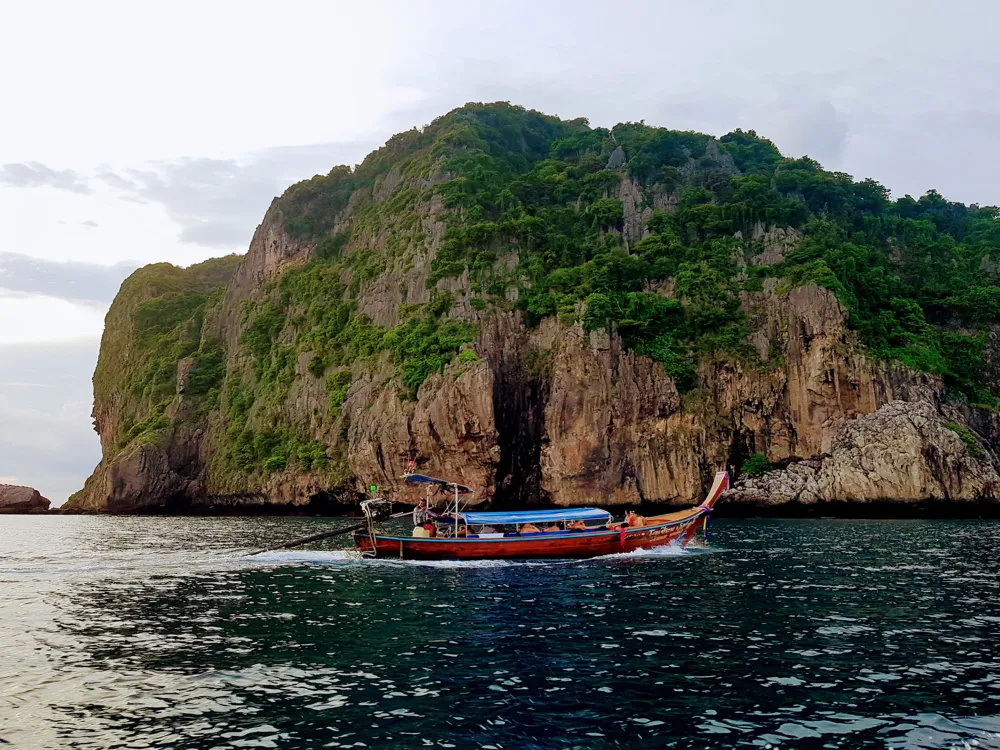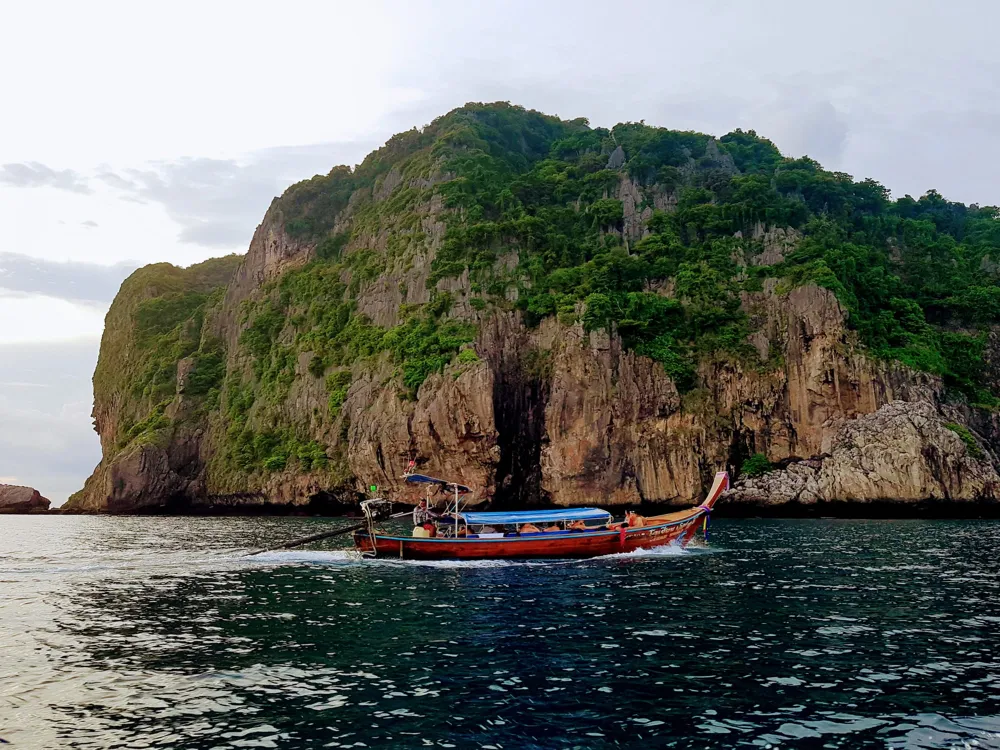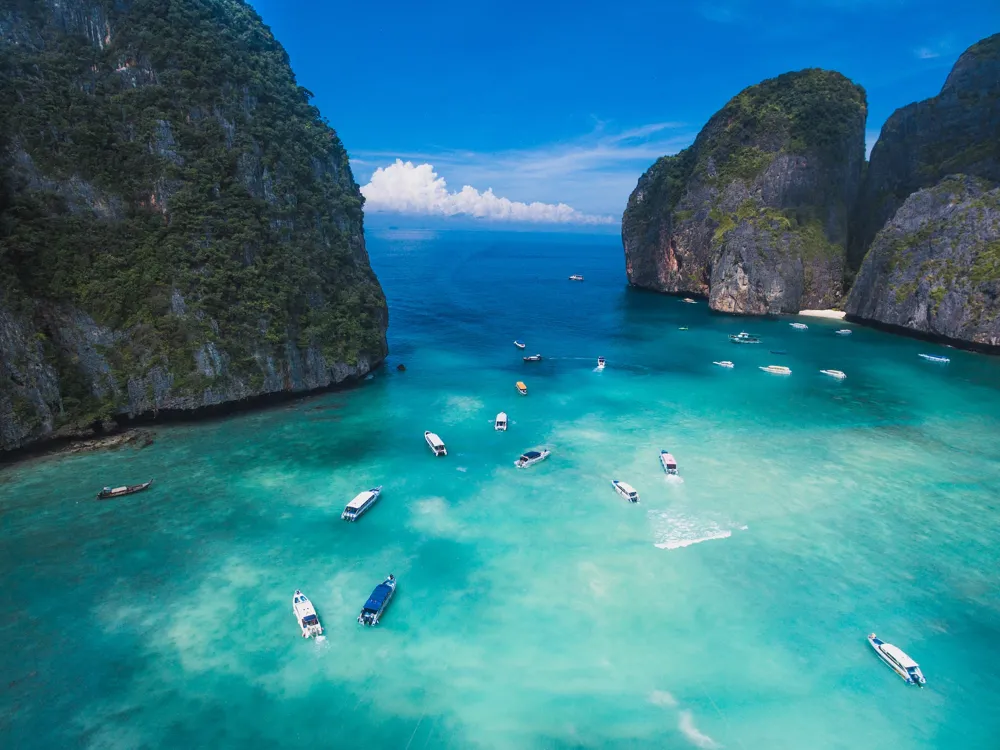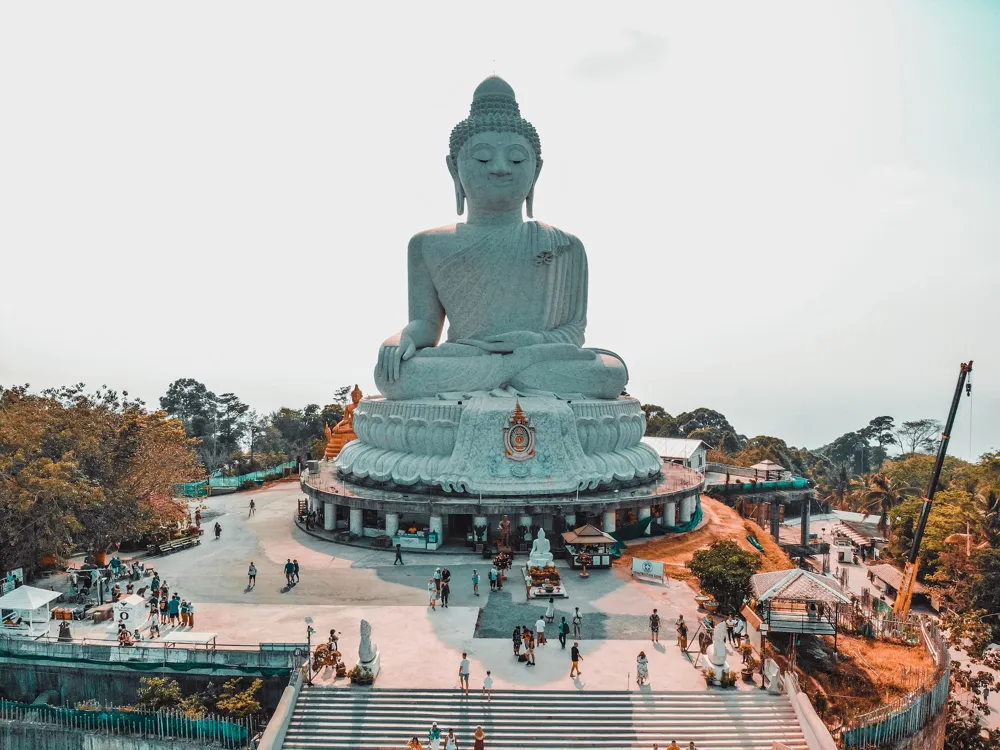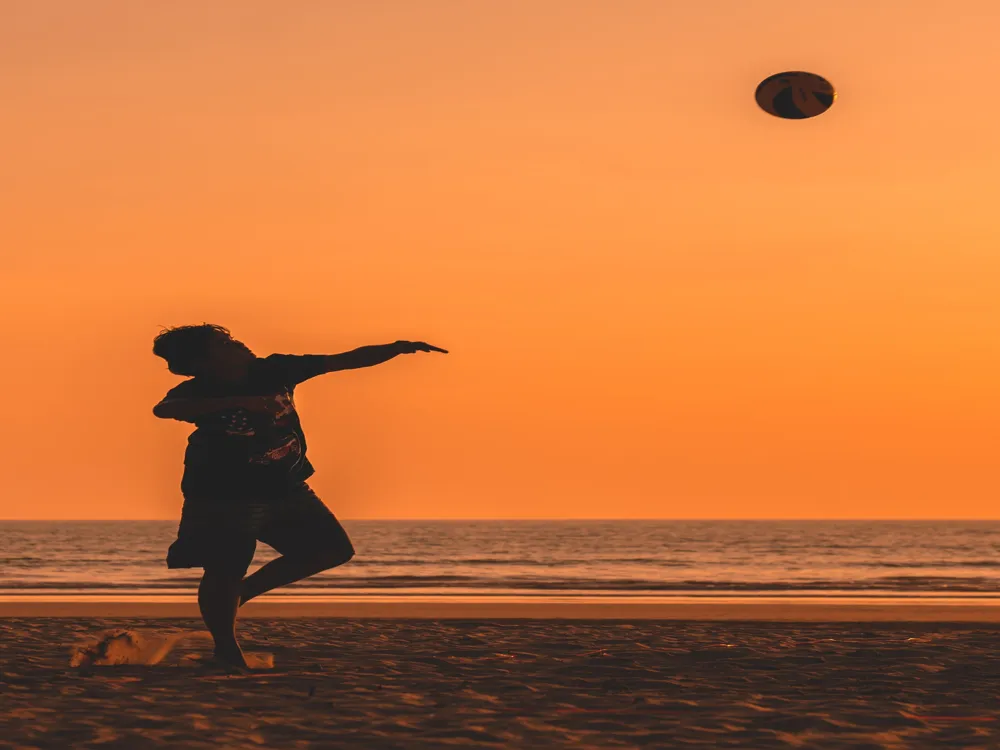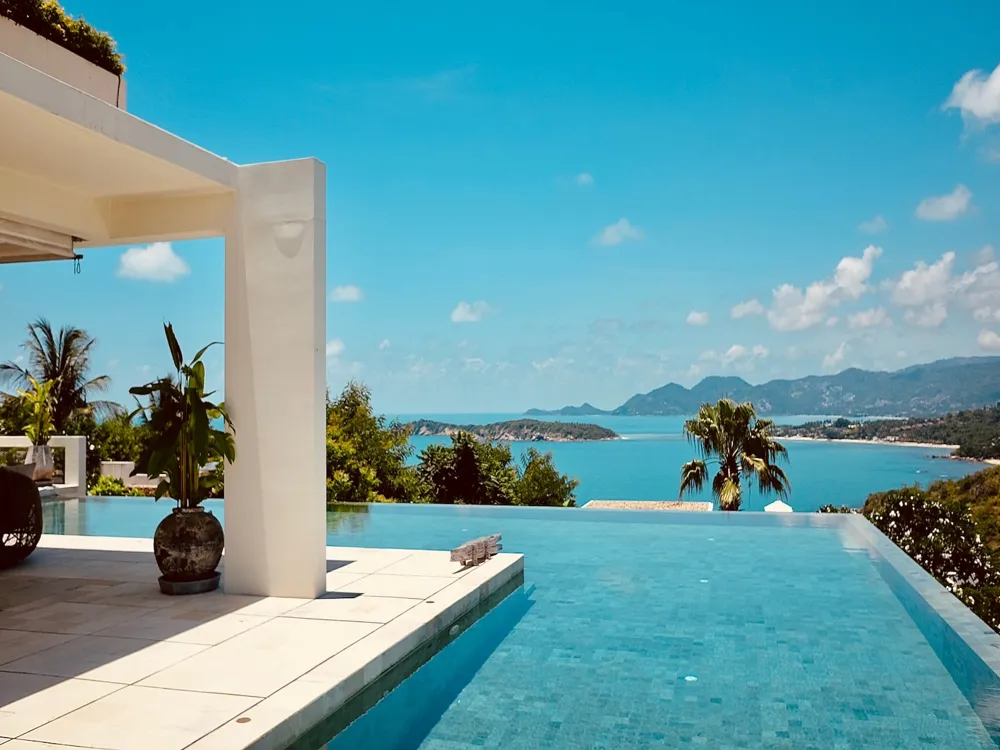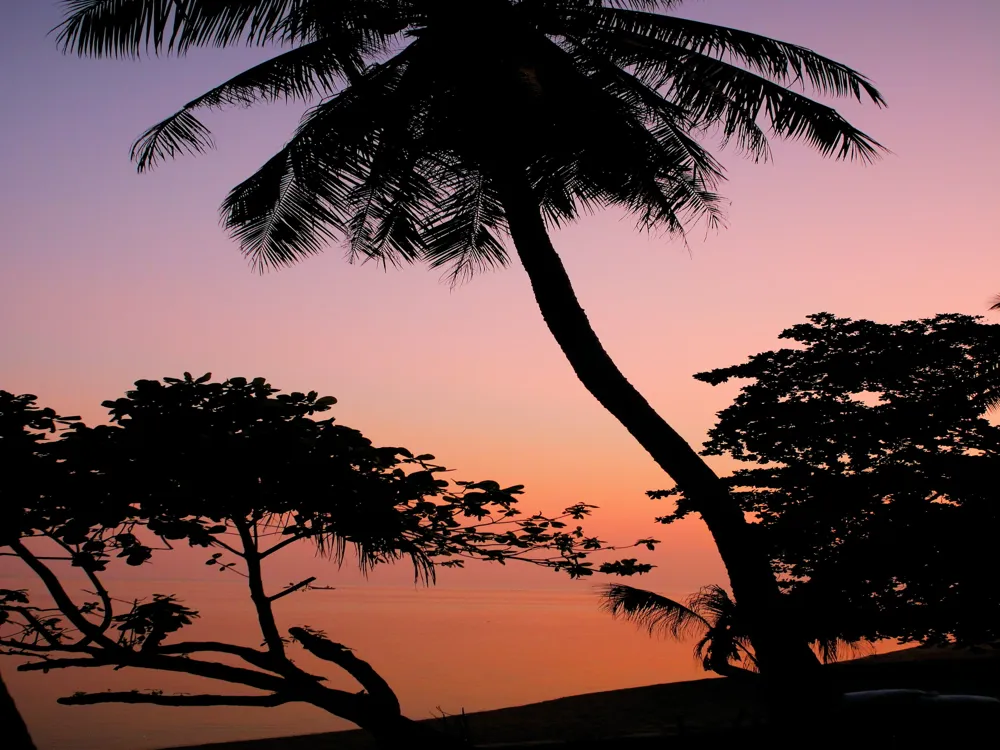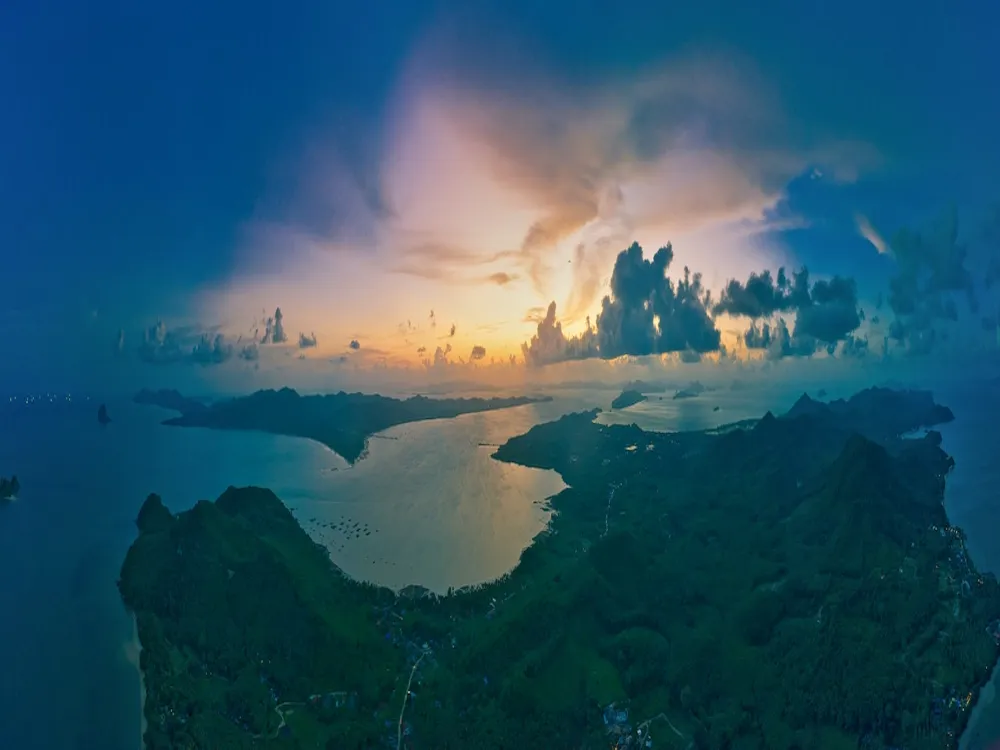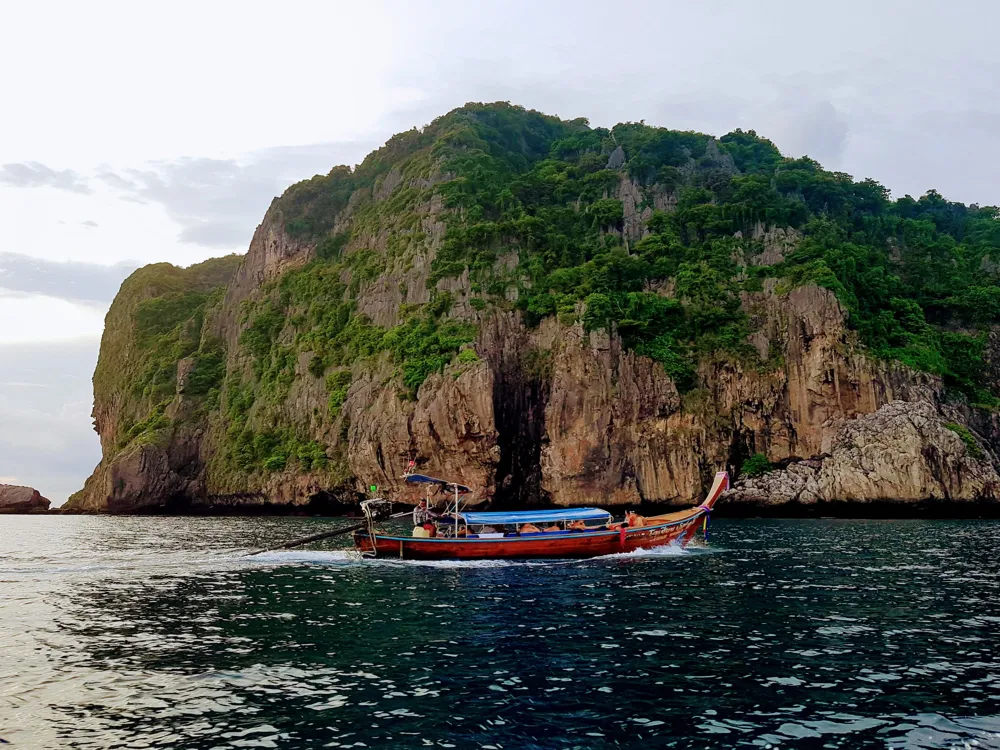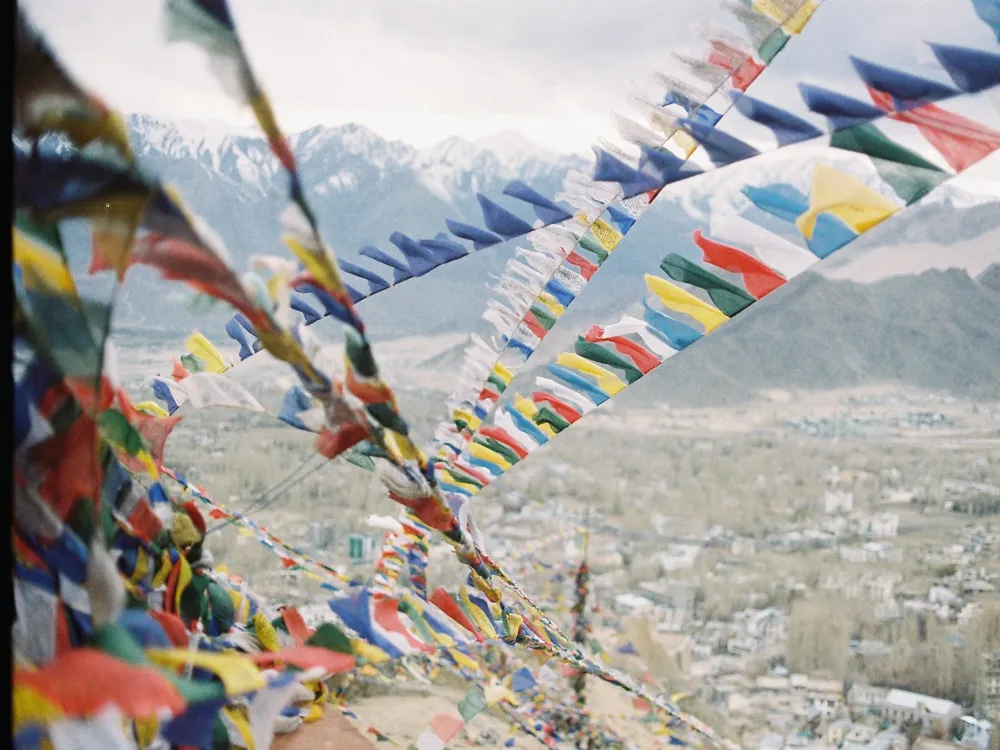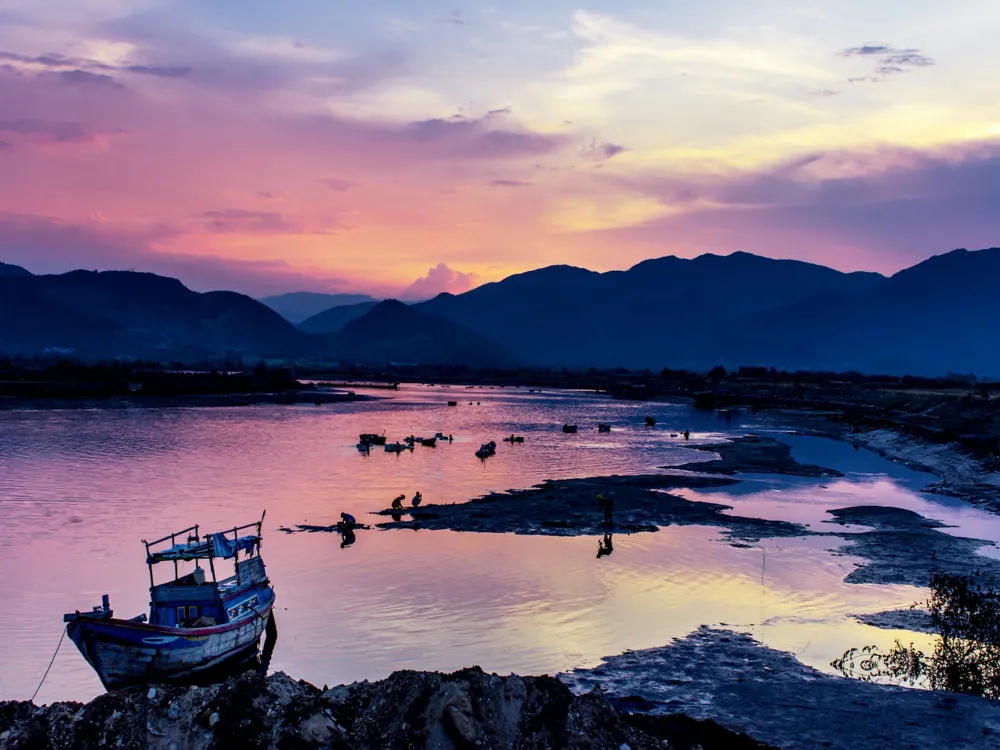Wat Kaeo Korawaram, located in the vibrant province of Krabi, Thailand, stands as a beacon of serenity and cultural richness. This temple, often overlooked by tourists in favor of the province's famous beaches and islands, offers a unique glimpse into Thailand's spiritual and architectural heritage. The temple's name, derived from the Pali language, signifies the 'Crystal Hall Temple', a reference to its dazzling aesthetic and spiritual purity. Established in the late 19th century, Wat Kaeo Korawaram has since been a center of Buddhist learning and worship. It is not only a place of religious significance but also a hub of community activities, drawing locals and visitors alike into its peaceful embrace. The temple complex, adorned with lush greenery, provides a tranquil escape from the bustling streets of Krabi town, inviting visitors to explore its sacred grounds and immerse themselves in a world of tranquility and contemplation. As you step into the temple grounds, the first thing that strikes you is the majestic white chapel, a stark contrast against the verdant backdrop. The chapel, or 'Ubosot', is where the main Buddha image is enshrined. This image, revered by the local community, encapsulates the essence of Theravada Buddhism prevalent in Thailand. Surrounding the chapel are various smaller structures, including living quarters for monks, meditation halls, and educational facilities, each playing a pivotal role in the temple's daily life. Wat Kaeo Korawaram is not just a religious site; it's a living, breathing entity that reflects the daily rhythms of Thai Buddhist life. Visitors can observe monks going about their daily routines, partake in meditation sessions, or simply sit in quiet reflection, soaking in the serene atmosphere. The temple also plays a crucial role in the local community, hosting religious ceremonies, festivals, and cultural events, making it an integral part of Krabi's social and spiritual fabric. The architecture of Wat Kaeo Korawaram is a magnificent blend of traditional Thai and modern design elements, creating a visually stunning and spiritually uplifting space. The temple's layout follows the conventional Thai Buddhist temple plan, consisting of the main chapel, a pagoda, monk living quarters, and other ancillary buildings, each serving a specific religious function. The main chapel, or 'Ubosot', is the architectural centerpiece of the temple. It is an exquisite example of contemporary Thai temple architecture, with its sweeping multi-tiered roof, intricately carved gable ends, and ornate window frames. The roof, adorned with chofahs (bird-like decorations), is a distinctive feature of Thai temples, symbolizing celestial beings that protect the sacred space. The chapel's exterior is predominantly white, symbolizing purity, and is complemented by gold and red accents, adding a touch of regal elegance. Inside the Ubosot, visitors are greeted by a stunning array of mural paintings depicting scenes from the Buddha's life, Jataka tales, and traditional Thai motifs. These murals, rich in color and detail, not only serve a decorative purpose but also convey moral and spiritual teachings. The centerpiece of the chapel is the Buddha image, gracefully seated in a meditative pose, embodying peace and enlightenment. This image, often gilded and adorned with precious stones, is a focal point for worship and meditation. Surrounding the main chapel are several smaller structures, each with its unique architectural charm. The pagoda, typically housing relics of the Buddha or revered monks, is a multi-tiered structure, echoing the design elements of the Ubosot. The living quarters for monks, known as the 'Kuti', are simplistic in design, reflecting the Buddhist principle of non-attachment and simplicity. These buildings, though modest, are integral to the temple's functioning, providing space for meditation, study, and communal living. When visiting Wat Kaeo Korawaram, it's important to dress modestly. Shoulders and knees should be covered, and shoes must be removed before entering any of the temple buildings. This respect for local customs not only shows reverence for the religious site but also helps in creating a respectful and harmonious atmosphere. As a place of worship, it's crucial to maintain a respectful demeanor at all times. Loud voices and disruptive behavior are discouraged. Additionally, when sitting, avoid pointing your feet towards Buddha images or monks, as this is considered disrespectful in Thai culture. Visitors are often welcome to participate in temple activities such as meditation sessions or alms-giving ceremonies. These activities offer a unique insight into Buddhist practices and are a great way to engage with the local culture. While photography is generally allowed, it's important to do so respectfully. Avoid taking pictures in a way that disrupts worshippers or ceremonies. Always ask for permission before taking photos of monks or locals. Many Thai temples, including Wat Kaeo Korawaram, are supported by donations from the public. Contributing to the temple's upkeep, even in a small way, can be a meaningful way to show appreciation and support for the local community. Reaching Wat Kaeo Korawaram is relatively easy, as it's located in Krabi town, accessible by various modes of transportation. For international visitors, the most convenient way is to fly into Krabi International Airport and then take a taxi or local bus to the temple. For those already in Krabi, local tuk-tuks, taxis, or even renting a scooter can provide a flexible and enjoyable way to visit the temple. The temple's central location in Krabi makes it an accessible destination for all visitors. Read More:Overview of Wat Kaeo Korawaram
Architecture of Wat Kaeo Korawaram
Tips When Visiting Wat Kaeo Korawaram
Dress Appropriately
Be Mindful of Cultural Norms
Participate in Temple Activities
Photography Etiquette
Support the Temple
How To Reach Wat Kaeo Korawaram
Wat Kaeo Korawaram
Krabi
₹ 15,000 onwards
View krabi Packages
Also Refered As:
Wat Kaew Korawaram
Krabi Travel Packages
View All Packages For Krabi
Top Hotel Collections for Krabi

Private Pool

Luxury Hotels

5-Star Hotels

Pet Friendly
Top Hotels Near Krabi
Other Top Ranking Places In Krabi
View All Places To Visit In krabi
View krabi Packages
Also Refered As:
Wat Kaew Korawaram
Krabi Travel Packages
View All Packages For Krabi
Top Hotel Collections for Krabi

Private Pool

Luxury Hotels

5-Star Hotels

Pet Friendly







